Recent projects
pvdkb In 2021 I combined five nine-second pieces of music with images from an old public domain math book to try out the world of NFTs. I chose the hicetnunc platform because of their low cost and their use of the more environmentally-friendly Tezos cryptocurrency. Then hicetnunc went away, so in the first week of 2023 I put the pieces on the objkt Tezos NFT marketplace as well as TikTok and other social media. The series is called pvdkb for “piano, viola, double bass, kalimba, and banjo”; each member of the series is four of those instruments, each usually playing just a few notes over the nine seconds to leave lots of space. On objkt I priced each at 3 tezos, which is about $3. No one has bought any, but I thought that the idea of “selling” music pieces of this length was fun to experiment with.
Just ABE was written for the University of Virginia New Music Ensemble in the Spring of 2022. While the musicians play from the written score, audience members use their phone browsers to play notes on a web page I developed. Musicians and audience members are only playing the notes A and E for the first movement, E and B for the second, and A and E for the third, and the notes on the web page are in just intonation, hence the title. We performed this at Old Cabell Hall on April 7th with 40 or so people in the audience playing the phone part. You can read the score and audience instructions while you listen to a recording from that night that is a little over seven minutes long. The music starts at about 1:57.
Banjo with the WSO Tenor banjos are smaller than typical five-string open G bluegrass banjos, and their four strings are tuned like a viola. I got one during the pandemic and have only had one gig with it: with a symphony orchestra while wearing a tux. Read more at My brief tenor banjo career.
Side Steps was written for the University of Virginia New Music Ensemble in the Fall of 2021. At 15:11 of the video below I explain the idea behind the piece (applying new music improvisation styles to the chord progression of a classic jazz tune—in this case, John Coltrane’s “Giant Steps”) and then we play it. You can also see the Side Steps score.
At 32:14 of the video you can see the group play Terry Riley’s classic In C, which was a challenge for a quartet but came out very well. (Unfortunately, the first few bars of it are cut off in the video.)
6,000 Miniatures My brother Peter once showed me a trick where you can fake “modern” 20th century piano music by always keeping your left hand on the white keys and your right hand on the black keys, occasionally switching, while improvising random notes. (While we both know a few licks in limited keys, neither of us is a proper keyboard player.) This piece was an exercise in following those constraints. I had the hands switch between black and white keys just about every bar. Below is a YouTube video of the piano version, which includes the score. The availability of a nice harpsichord sound font and some binge listening of old and new harpsichord music on Spotify were also inspirations to write this; you can find the harpsichord version on SoundCloud.
60 Second Blues was written for the University of Virginia New Music Ensemble in the Spring of 2021 with the goal of being feasible over Zoom, as described in the score. The general idea of the piece is that if a twelve bar blues repeats a pattern with the classic chord progression spread across twelve measures of four beats each, the form of this piece uses the same chord progression—in this case, in C—but with no regular pulse: instead of twelve measures there are twelve five-second increments. For each increment, musicians choose notes from the chord that would be played in that bar of a twelve bar blues.
The choice of notes to play is intentionally very limited in the first minute so that the listener will not even recognize the blues pattern. In succeeding minutes the musicians can select from more and more notes of the chord (for example, a C9 chord in the first five seconds of the cycle) so that the sound of the blues pattern gradually emerges.
Bluegrass Emergency 12 and 35 In December of 2020, after figuring out some fiddly licks on the viola, I realized that with a cheap borrowed mandolin in the house and my upright bass, acoustic guitar, and a multitrack recorder, I could be a bluegrass band. I recorded this on New Year’s Day.
Two-Part Invention I wrote this for the New Music Ensemble’s fall 2020 semester. This was something else that would ideally be played by a group of people in the same room but because of the pandemic we did as separate tracks that I mixed together before adding a video of the score synched with the music:
Zip + 4 In the fall of 2019 I started playing viola with I-Jen Fang’s New Music Ensemble at the University of Virginia. For the spring 2020 semester, once the coronavirus social distancing required us to meet via Zoom instead of our regular rehearsal room, it turned out that a piece of mine that we’d been working on could still be assembled without everyone being in the same room, so I did a mix and a video of the score synched with the audio.
There are nice blurbs for it in the UVa Music Department’s Spring 2020 newsletter, which describes the goals of the piece a bit more, and in the Inside UVa Arts newsletter.
Earlier work
When I was little I wanted to be drummer like Ringo. With my parents’ help at a local baby parade, including the borrowing of some friend’s wigs, I got to play Ringo while my sisters and a neighbor played John, Paul, and George. Years later I learned to keep a basic rock or jazz beat on a drum kit but never tried to pass myself off as a real drummer.
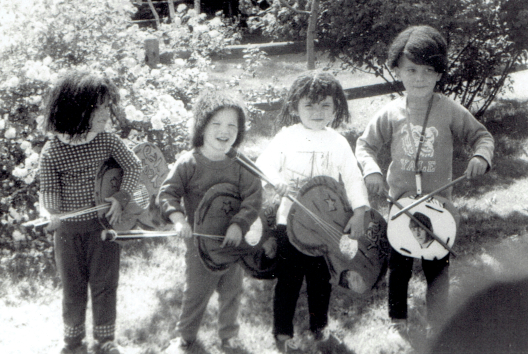
In my teens and twenties my goal was to eventually be the lead guitarist of a successful loud rock band. You can read about my limited success and follow links to recordings in Me as 80s New York lead guitarist.
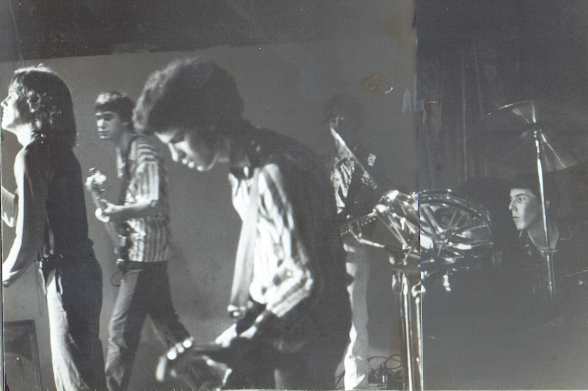
I had always listened to a lot of jazz and played a bit of electric bass. When we moved from New York City to Charlottesville in 2003 I got an upright bass, started taking lessons from Pete Spaar, and eventually became a regular in the local minor league jazz scene. The longest regular gig was playing with Fellini’s Jazz Collective #9 every Mondays (eventually, Wednesdays) at Fellini’s Italian Restaurant in Charlottesville for several years. I also played for a bit with Acme Swing and various one-offs with friends.
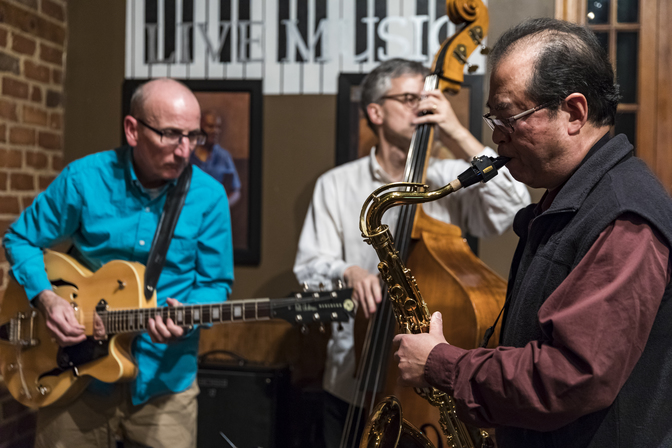
You can hear me playing with Haywood Giles in the background to this XML Summer School in Oxford 2009 video.
I may have worked on my bowing and reading a little more than other jazz bass players at my level, but it never occurred to me that I was qualified to play in a symphony orchestra until a friend convinced me that the Waynesboro Symphony Orchestra was desperate enough for bass players that they would take me. They did, and I played bass with them from 2011 - 2017. This included Beethoven’s 9th and 5th symphonies, which are a real thrill to play.
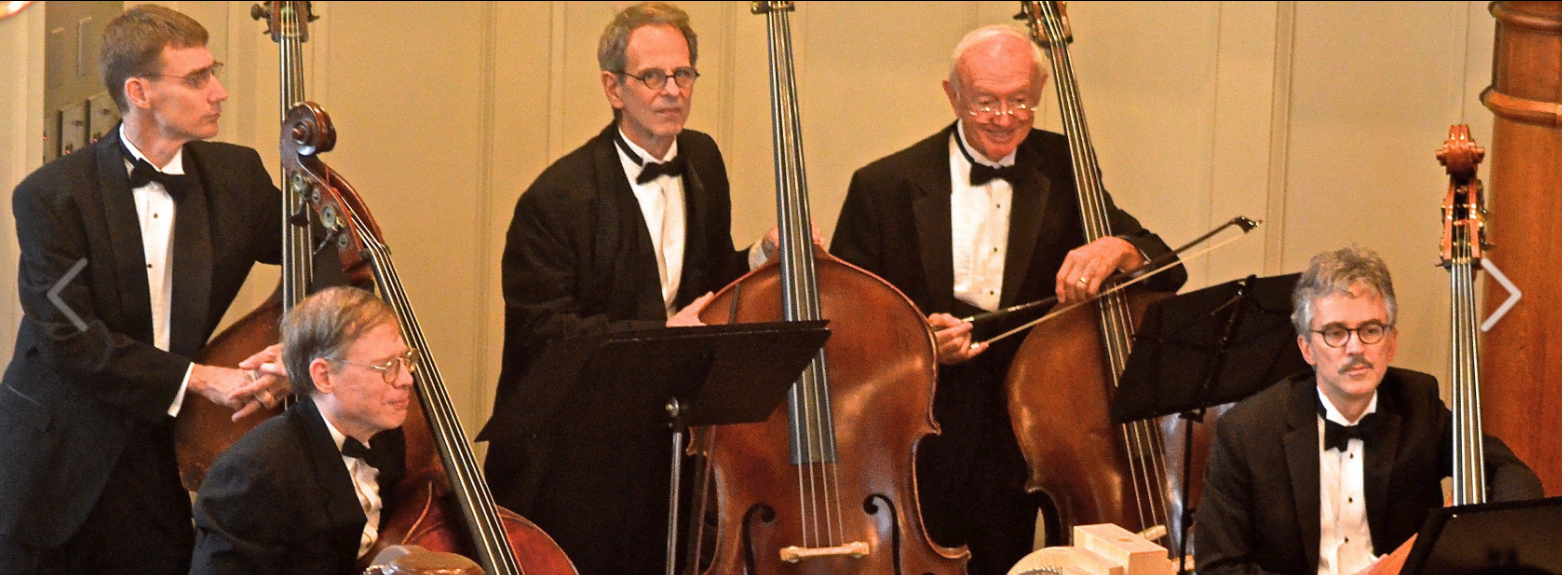
After I got involved in the Charlottesville jazz scene I started writing some jazz tunes. When I accumulated enough for an album I picked out some friends to rehearse it, picked a cool name for the band, and recorded an album of the songs. You can read about it at Album “Gin & Heptatonic” by my band The Heptatonic Jazz Quintet and follow links to the album on Spotify, Apple Music, and all the big streaming services on heptatonic.com.
For 20 or so years I had thought it would be great to be in a string quartet, and the viola is such a cool instrument (as cool as John Cale and Jonny Greenwood), so I borrowed one and started lessons in 2017. I knew it would be a while before I was ready for the Waynesboro Symphony Orchestra’s viola section, so I played with the Crozet Community Orchestra for a few concerts until the WSO’s announcement that they were doing Stravinsky’s Firebird Suite convinced me to jump into the deep end of that pool. I certainly faked parts of it, but overall it was a lot of fun and I have continued to play in their viola section. I’ve also been getting together with friends from those two orchestras to try out some string quartet and quintet pieces. (Note Heptatonic trumpeter Brandon Rose in the upper-right of the Crozet Community Orchestra picture below. Part of the fun of the Charlottesville music scene is the Venn Diagram of which of your friends show up playing which multiple genres of music.)
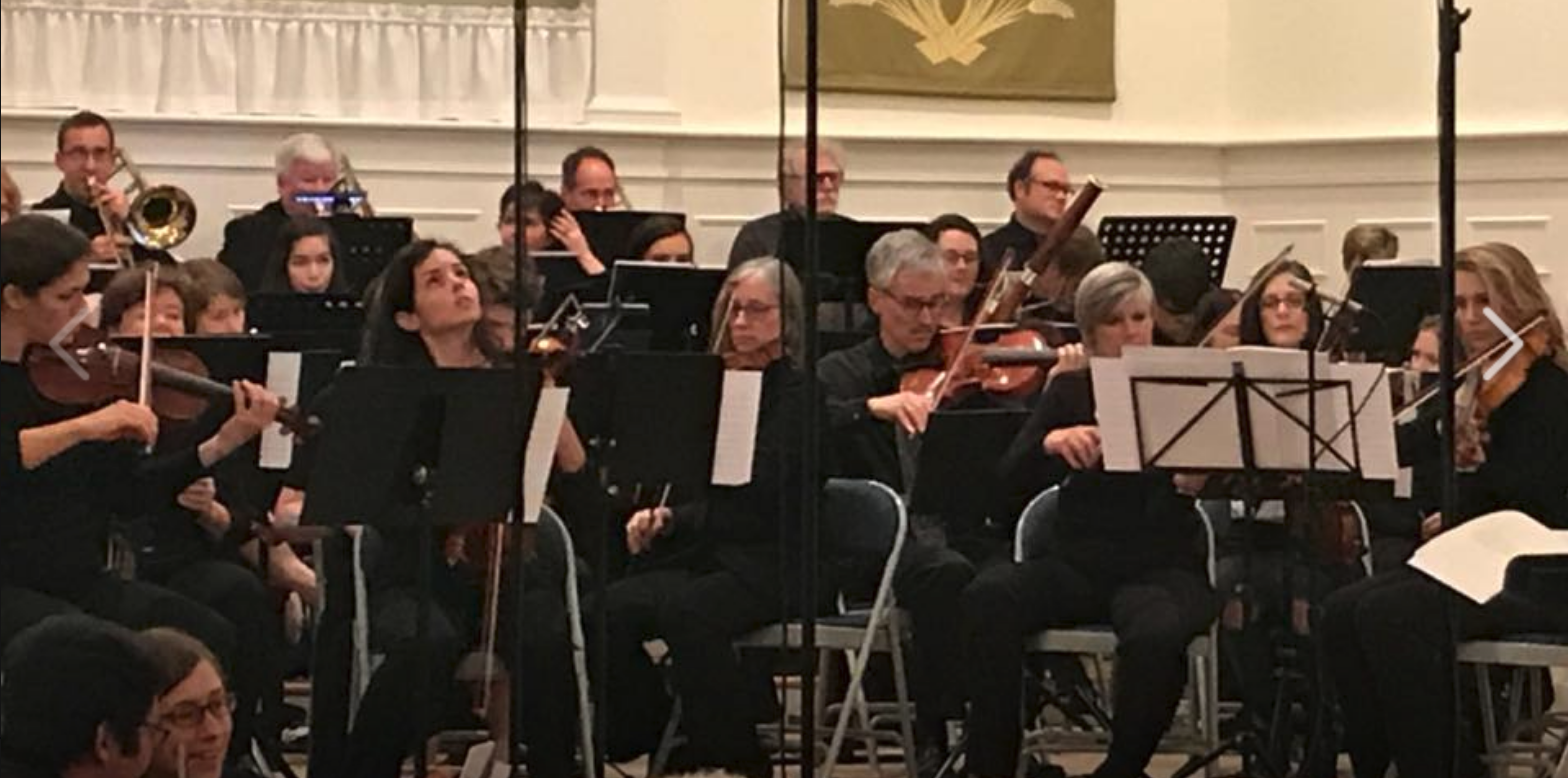
Other music projects
-
Old and new projects on my SoundCloud page.
-
I wrote the song Blue Ridge Christmas for Charlottesville’s Soul Transit Authority.
-
Scoring that I did for a friend’s movie.
-
temp List of pieces
** Open instrumentation pieces
Links lead to descriptions, scores, and recordings when available.
pvdkb 2021
Just ABE 2022
Side Steps 2021
60 Second Blues 2021
Two-Part Invention 2020
Zip + 4 2019
- Side Steps 2021
** String quartets
Scores available on requestion.
-
Wig on Pole on soundcloud
-
Babirusa on soundcloud
** Jazz
Leadsheets available on request.
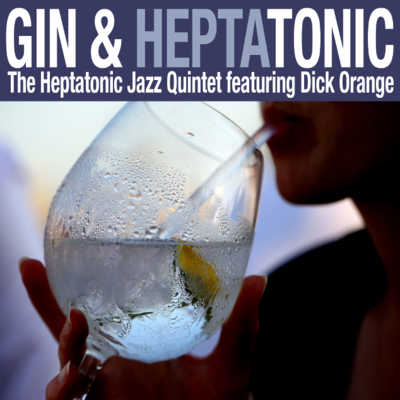

Share this post